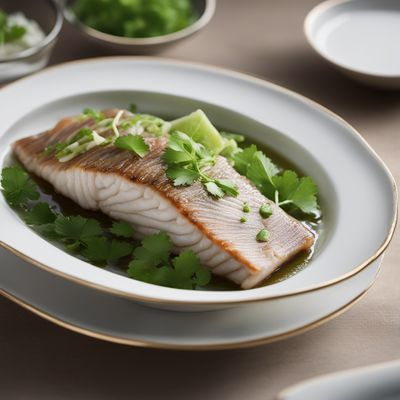
Dish
Lutefisk
The dish is made by soaking dried whitefish in lye for several days, then soaking it in water for several more days to remove the lye. The fish is then boiled until it becomes gelatinous and served with butter or cream sauce. Lutefisk is a high-protein dish that is also rich in vitamins and minerals.
Origins and history
Lutefisk originated in Scandinavia, where it has been a traditional dish for centuries. It was originally made as a way to preserve fish during the long winter months.
Dietary considerations
Lutefisk is not suitable for individuals with fish allergies or who are sensitive to strong odors. It is also not suitable for individuals with celiac disease or gluten intolerance, as it may contain gluten.
Variations
There are no known variations of lutefisk.
Presentation and garnishing
Lutefisk is typically served on a plate or in a bowl. It is often garnished with fresh herbs, such as parsley or dill.
Tips & Tricks
To make the perfect lutefisk, it is important to use high-quality dried whitefish and to follow the traditional soaking and boiling process. The fish should be served hot with butter or cream sauce, and paired with traditional side dishes and drinks.
Side-dishes
Lutefisk is often served with boiled potatoes, peas, and carrots. Other popular side dishes include lingonberry sauce and lefse, a traditional Norwegian flatbread.
Drink pairings
Lutefisk is traditionally served with beer or aquavit, a traditional Scandinavian spirit. Other popular drink pairings include white wine or sparkling cider.
Delicious Lutefisk recipes
More dishes from this category... Browse all »

Abaco Baked Grouper
Bahamian cuisine

Acqua pazza
Italian cuisine

Agujjim
Korean cuisine

Ajoarriero
Spanish cuisine

Albóndigas de bacalao
Spanish cuisine

Anguilla alla Bisentina
Italian cuisine

Anguilla alla giovese
Italian cuisine

Anguilla alla muranese
Italian cuisine





